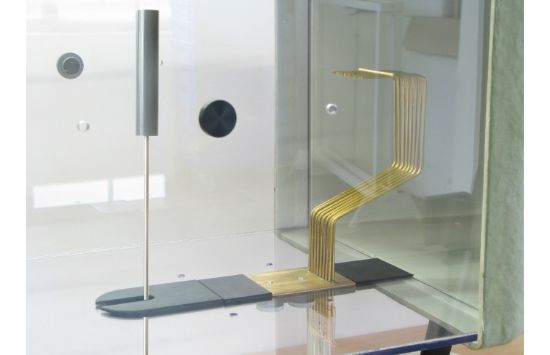Boundary layer flows form when drag bodies are immersed in a flow. In the wake of the body immersed in a flow, these boundary layer flows meet each other and form turbulence that leads to the velocity in this region being reduced. The reduction in velocity leads to a decrease in the dynamic pressure.
The HM 170.28 experimental unit – used in the wind tunnel HM 170 – allows the wake on a cylinder immersed in a flow to be measured. To record the total pressures, the experimental unit contains a wake rake consisting of 15 Pitot tubes. Each Pitot tube is fitted with a hose connection. The wake rake can be mounted at two different distances from the cylinder.
The total pressures are displayed on the tube manometers HM 170.50 or in the electronic pressure measurement HM 170.55. The pressure curve shown there clearly indicates the so-called wake depression. As a key parameter, the drag coefficient of the body in a flow can be determined from the pressures. In addition, the drag coefficient can be determined by measuring the drag force.

